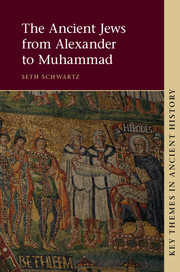Book contents
2 - Maccabean Revolt and Hasmonean dynasty
Published online by Cambridge University Press: 05 June 2014
Summary
A GREEK JERUSALEM?
The ‘hellenization’ of the cities of central and eastern Asia Minor and the Syro-Palestinian coast is an obscure process which had fatefully important consequences (G. Cohen 1995; 2006). In the course of the third century bce most cities in these regions were transformed from non-Greek to Greek cities. Most of them cultivated cultural and political traces of their pre-Greek past, now marginalized into what we may call ‘local colour’, adding some special character to cities which otherwise aspired to be as similar as possible culturally and institutionally (Millar 1983; Sherwin-White and Kuhrt 1993). This development eventually changed the texture of life in the eastern Mediterranean and must be regarded as the most consequential process initiated by the Hellenistic kings. Yet we know very little about how and why this happened, and surprisingly little, too, about the short-term implications of the change: in what way, precisely, were these cities ‘Greek’ after the moment of transformation? Still, several points seem nearly certain: in most cases, these cities are to be distinguished from colonies, that is, Greek cities which grew from the practice of the kings of settling their (Greek) veterans or active troops in nucleated settlements, sometimes in or near pre-existing towns or villages, and granting them land and ‘bodies’ (somata; enserfed non-Greek natives). It seems unlikely that cities such as Sardis, Tarsos, Arados, Tyre, Sidon, Askalon and Gaza were ever colonized, though some or all could have received voluntary settlement by Greek immigrants. This implies that the initiative for the transformation came from the locals, presumably the leading classes of the towns, which in turn suggests that these hellenized cities may be understood as especially concentrated examples of the cultural and political pressures I described above.
- Type
- Chapter
- Information
- The Ancient Jews from Alexander to Muhammad , pp. 39 - 58Publisher: Cambridge University PressPrint publication year: 2014

